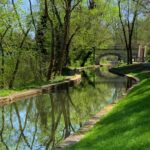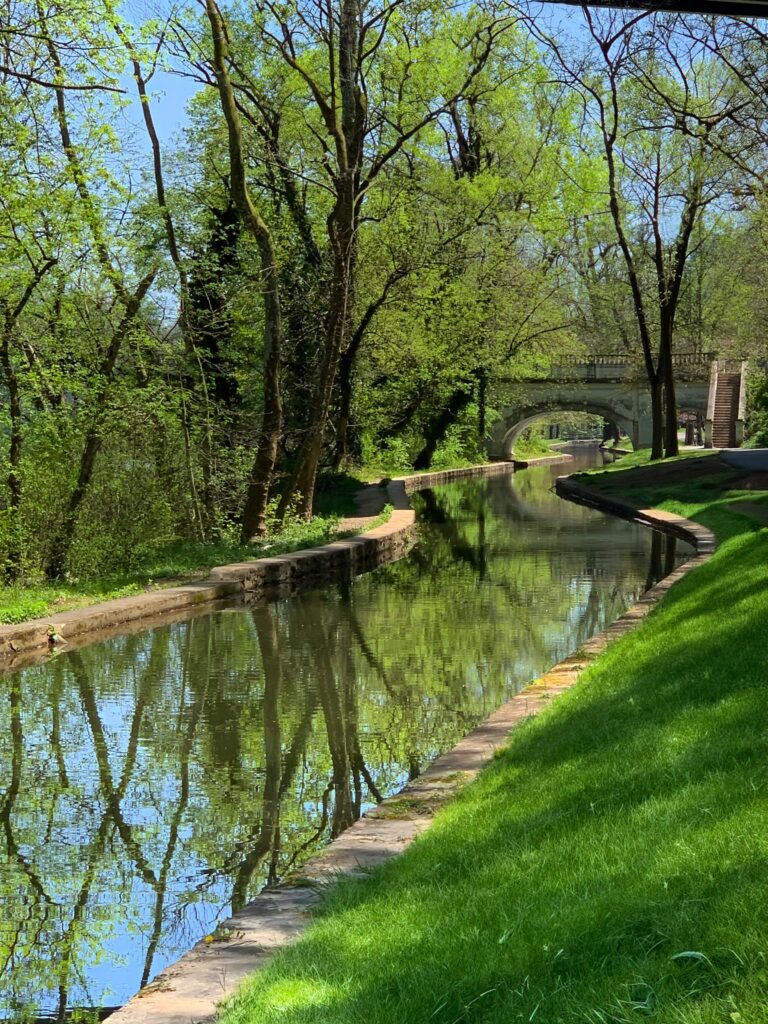
Walking the Edge
“Be brave and walk through the country
of your own wild heart.” — Teresa of Avila
by the Rev. Canon Martha Kirkpatrick
Since retiring, I spend a significant amount of time in my home state of Maine where I have become a walker. Which is to say, I have gone from “I should walk” to “I need to walk.” Every day that I can, I walk a half-mile into town and to the post office and library and back, and then a somewhat shorter walk in the other direction after dinner, while the evening light is on the harbor. Several times a week I go to my “sauntering” place: a trail through the woods with lookouts along a tidal river in a preserve called “Oven’s Mouth.” I have done this so much now that I feel the trees welcoming me back. That may be fanciful, I suppose, but I am learning that in my desire to grow deeper in relationship with the natural world, I must be willing to suspend old ideas and see what might emerge. Something is shifting.
When in Wilmington, I have two favorite walks. My urban walk runs down Baynard Boulevard to Brandywine Park, circling around to Market Street and back, about four miles. My favorite sauntering place is Rockwood Park, where I walk along the bike and walking trail, sometimes as far as Bellevue and back. I have trees that know me there too, and familiar bird calls and favorite resting places.
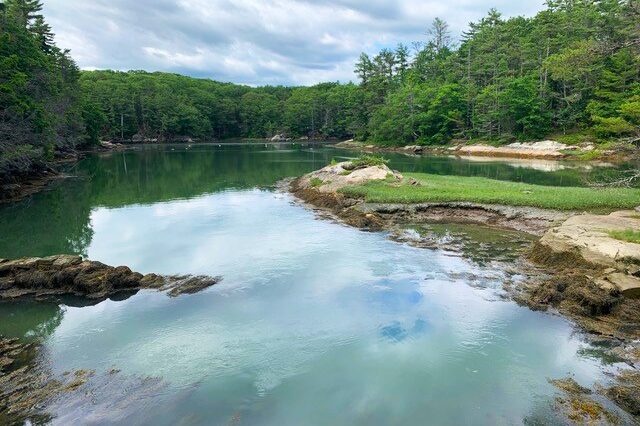
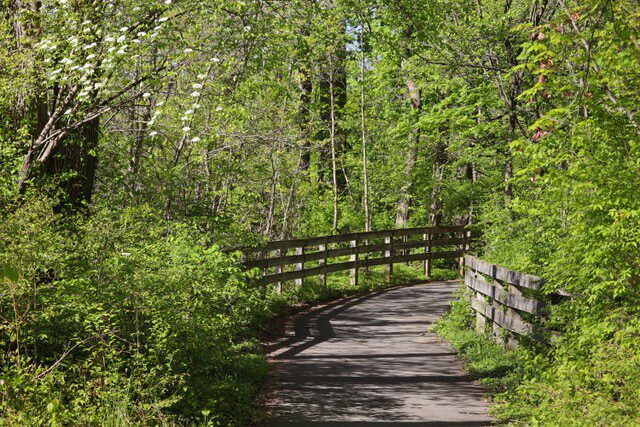
The word “saunter” comes from “saint terre,” or holy ground. For the past year I have been involved in the Seminary of the Wild Earth (https://www.wildspirituality.earth/seminary-of-the-wild-earth), which is all about restoring our kindred relationship with the rest of the natural world. Walking in nature is imperative — walking slowly enough to listen and smell and notice and open ourselves up to reconnection.
Questions present themselves: Who am I? Who are we? What is our relationship to the rest of the natural world? How are we called to live in the world?
Certain possible theological understandings of our relationship to the rest of the natural world are by now so demonstrably destructive to all of life’s flourishing that they simply cannot be right. One old idea is that humans are to “have dominion over and subdue” the rest of the natural world— a role that is essentially violent and oppositional. This role easily leads to misusing, abusing, and using up whatever we desire. This is suicidal. I am not here to dominate anyone, and I doubt you are either. So I am going to assume that the problems with this are glaringly obvious by now, and I will move on to the next thing.
Another idea is that we are called to be “stewards” of the rest of the natural world. We stand in for God as the world’s overseers, standing apart from nature, and the holders of knowledge and agency. Still separate and apart. “May we use its resources rightly,” as the Book of Common Prayer says. This is a phrase I loathe. It invites us to see the natural world through a utilitarian and transactional lens. By this reckoning, the natural world was all put here for humans to “use;” we just have to do it right. So, we “reduce, reuse, recycle,” etc. This is fine, indeed necessary, but nowhere near enough. Both dominion and stewardship are alienating in their own ways, and we have suffered profoundly from this alienation for centuries.
Another approach to our relationship with the natural world sees humankind as inherently dangerous to the natural world’s health. This approach would say we need to cordon off certain areas for protection (wilderness areas, sand dunes, sensitive wildlife habitat, coral reefs, etc.) implying that we are free to do what we want to the rest of it. Much of government policy is guided by this idea, and it has slowed some of the more egregious impacts of human development. But it basically says, “we don’t belong here.” The essential flaws in the argument were revealed when, in the course of creating the National Park Service, indigenous tribes, who are our best example of how to live in right relationship with the natural world,[i] were removed from their land so that the land could be preserved in its natural state “free from human influence.” This approach is also alienating, arrogant, and unsustainable. All of these approaches foreground human needs and desires over the rest of the natural world (as though it’s a competition!) and assume that this is what God wants for us.
I believe we are being invited to come back into relationship with the rest of the natural world in a way that is based in kinship, dialogue, partnership, reciprocity, teaching and learning, giving and receiving. Belonging. It involves de-centering humankind and our own perceptions so that we may come to see ourselves as radically interconnected to the whole. Rather than remove ourselves from selected areas, we see ourselves as necessary participants, inviting ourselves back into relationship, a relationship that is grounded in health and wholeness for all creation. This is emergent; we are in the process of rediscovering ourselves in relationship, and with new ideas and new relationship comes new language. Some use the word “rewilding,” to describe this movement, others “re-earthing.” Whatever we call it, it is based on the idea that, in the words of author Daniel Cooperrider, “it is through encounters of life with life that the sacred happens.” For me as a Christian, it is grounded in a fundamental understanding of the Christ mystery as revealing the sacredness of all life [in him all things in heaven and earth were created” (Col. 1:1520)], and an understanding of the Trinity that reveals that we are all in a network of relationality that is a continuous flow of giving and receiving, “horizontally,” that is to say, in this earthly plane and moment to moment in chronos time, and “vertically,” in the wider realms of the holy and eternal, Kairos time, with the cloud of witnesses holding the universe in love and calling us toward the telos: the fulfillment of the kingdom of God, which enfolds all creation.
An understanding of ourselves in kinship with the rest of the natural world can give us fresh eyes through which to read scripture. For this I highly recommend Daniel Cooperrider’s book Speak with the Earth and It Will Teach You: A Field Guide to the Bible[ii]. Here’s a taste. One of the most important passages in the Old Testament for the Abrahamic religions is Genesis 18, where Abraham and Sarah receive three visitors, on whom they lavish hospitality, well beyond what a primary obligation to extend hospitality to the stranger would ask of them. This passage begins with the Lord appearing to Abraham by the oaks of Mamre. Now it turns out that the oaks of Mamre are a favorite spot for Abraham and Sarah; they had been there before (see Gen. 13:18). Cooperrider asks,
“We might wonder, since this is indeed the first moment of extravagant hospitality that’s described in the Bible, where or how did Abraham and Sarah learn to extend such a generous welcome to others? Of course, one traditional answer has been to locate this story within the anthropological context of the practices of the nomadic, desert Bedoin culture…”[iii]
But even by the standards of desert culture, the hospitality Abraham and Sarah offer is extravagant. Cooperrider invites us to consider this:
“From an ecological perspective, trees are masters of hospitality, creating the conditions for thousands of other species to flourish….But even within the tree world, no species has mastered hospitality quite like the oak tree. Oak trees are a classic example of a keystone species — one species upon which many species in the ecosystem directly depend.”
Taking a deep dive into the Greek, the author invites this reading:
“God appeared to Abraham in the oak trees…. It is only when Abraham opens his eyes to the presence of God breathing in the oak trees that he is able to see that same presence of God breathing in the human beings that visit him… The oak trees teach hospitality then, both as a way of life marked by extravagant generosity and abundance, and also as a way of seeing — seeing the divine presence, the breath of life, coursing, connecting, commingling in all things, people, trees, caterpillars.” I am astonished.
This is all emergent. Many of us are seeking to reconnect to the natural world, finding our way. To be on this path is to be willing to be an “edge walker,”[iv] on the edge of what we think we know, willing to open it all up and see what’s there. Those of us on this path are finding each other, serving as guides to each other, sharing what the rest of the natural world is teaching us, and, in the words of Leonard Cohen, “show[ing each other] where to look amid the garbage and the flowers.” The one thing I am sure of is this: everything, everyone, every particle of matter, the space within us, the space among us, the space around us and before us, is shot through with holiness.
And so I walk.
______________________
[i] If you have not yet been acquainted with Robin Wall Kimmerer’s book Braiding Sweetgrass: Indigenous Wisdom, Scientific Knowledge and the Teachings of Plants (Milkweed Editions, 2025), I suggest you go in haste to your nearest library or bookstore.
[ii] Cleveland, OH: The Pilgrim Press, 2022.
[iii] Cooperrider, 117.
[iv] I believe this term was coined by Victoria Loorz, whose book Church of the Wild: How Nature Invites Us into the Sacred (Minneapolis, MN: Broadleaf Books, 2021) is on my very short list of must reads for anyone on this path. Also check out The Wild Church Network, Victoria’s website and courses found at https://theecosystem.mn.co/about. This is the space where many of us congregate and is the home of the Seminary of the Wild Earth mentioned above.
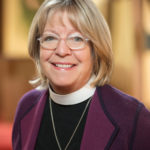
The Rev. Canon Martha Kirkpatrick, recently retired as Canon to the Ordinary for the Episcopal Church in Delaware, and previously was the rector of St. Barnabas’ Church in Wilmington. Before ordination she had a 20-year career in environmental protection, and was the commissioner of the Maine Department of Environmental Protection under then-Governor Angus King.
